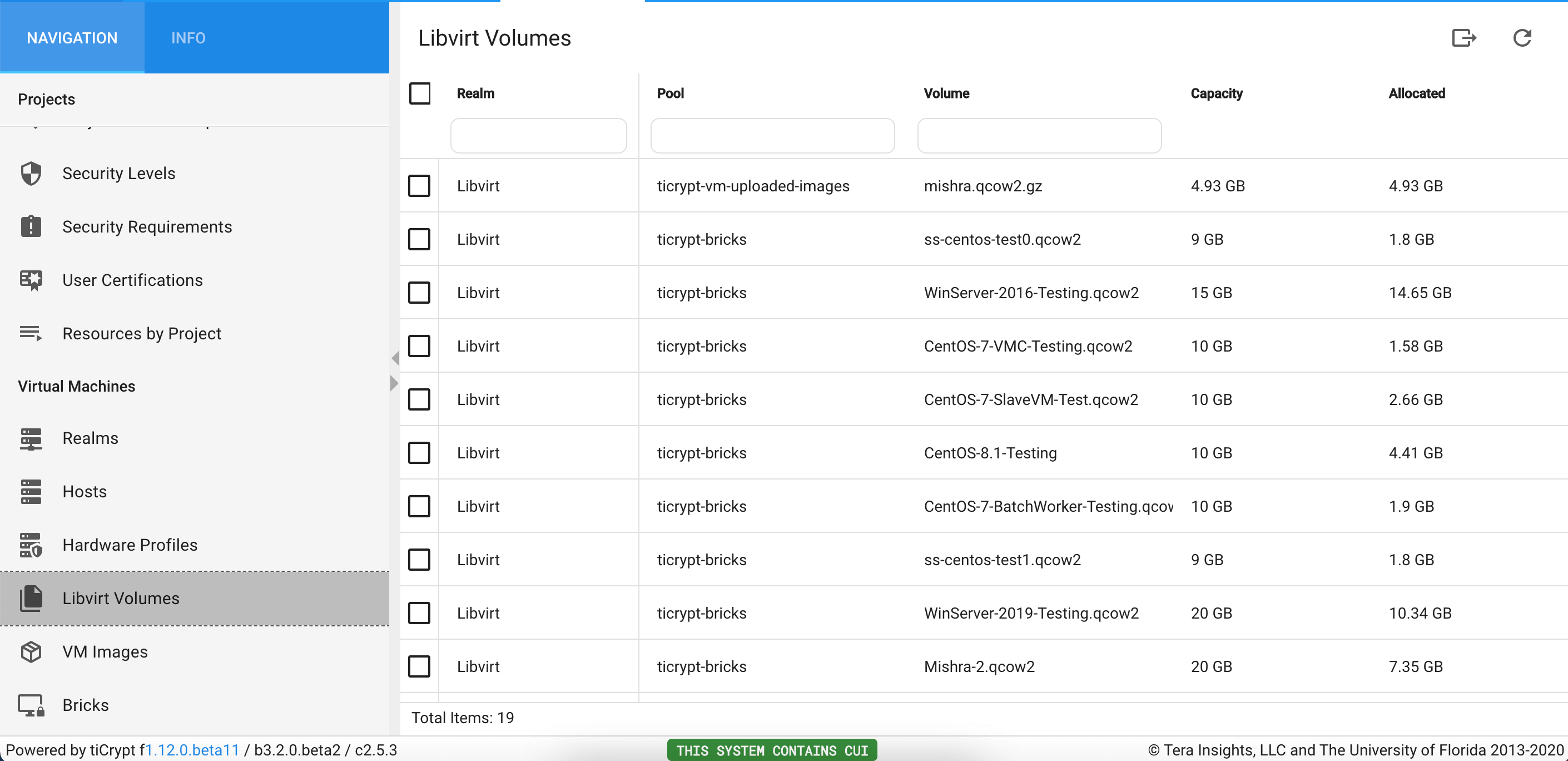VM Management
Realms
Realms, also known as hypervisors, which is a specific type of computer software that is used to create and run virtual machines. These realms can only be managed in the configuration files. Users can view the Realms that exist in the system through the "Realms" tab in management. Each Realm is associated with a Driver. The purpose of this driver is to let the backend system know HOW to communicate with the infrastructure. Realms do NOT connect to other realms. Users of tiCrypt cannot create their own realms.
Libvirt Hosts
Hosts are the actual servers that host the virtual machines. These servers are physical and actually exist somewhere. These hosts actually host the realms which are actually what create and run the VMs. Each of these realms consist of servers and other components....
A Host can be added by selecting the plus icon located at the top right side. A modal will appear that prompts the user to select a Realm, a name, a URI, the hardware Profile, and the state.
A Host has the following actions.
| Action | Notes |
|---|---|
| Edit | A user can edit the basic information about a host. |
| Delete | A user can delete a host. |
Hardware Profiles
Hardware profiles serve informational purposes and contain the following collumns:
- Name (Hardware name)
- Realm (i.e Libvirt)
- Cores (total number of cores)
- Memory (total memory)
- Devices (total number and type of GPUs connected to the hardware)
Users can change the collumn order by dragging it over with the mouse.
Libvirt Storage Pools
Libvirt Volumes
Libvirt Volumes are essentially the "disk" where the operating system lives. Users cannot populate the volume tab through tiCrypt. Rather, the system backend communicates with the host and requests all of the volumes that have been integrated into the system.

VM Images
A Virtual Machine Image is a fully configured virtual machine as a file that is used during deployment. A virtual machine defines the Realm, the volume, and the operating system. When defining the OS upon creating an image, the OS MUST match the OS that is associated with the Volume.
VM Hardware Setups
VM Configurations
Running VMs
The virtual machines tab allows users to view the virtual machines that are running in the system along with the owner, the team that is associated to the VM, whether it is a debug machine, the brick (the word used in this case is template), the cores, and the memory. If no VM's are running, nothing will appear in this tab.
Past VMs
Service VMs
Drives
The drives tab allows users to view all of the drives that have been created in the "VIRTUAL MACHINES" tab. For each drive, the name, owner, team, size, and format are displayed.
A Drive has the following actions.
| Action | Notes |
|---|---|
| Info | A user can view basic information about a drive. |
| TransferOwnership | A user can transfer the ownership of the drive to another user. |
| Delete | A user can delete a drive. |
A user may want to transfer the ownership of a drive. This can be thought of, essentially, as someone sharing a USB drive with another person. A VM must not be running. The owner of the drive can "transfer ownership" or give the "USB" to another user so that the user can use that drive in one of their VM's. A user can only transfer ownership of a drive to an individual who already have access to that drive.
The way that the drives work is as follows...
When a user creates a drive, it is encrypted using their public key, and another key that the system generates called a symmetric key. This information is sent and lives on the server. If a user would like to share access of the drive with another user, their private key is used to decrypt the symmetric key. Using the receiver's public key, a version of the symmetric key is created, and another "chunk" of information is sent to the server.
The cryptography used for the drives prevents any type of admin in the system from simply granting themselves access to a drive and taking them over. ONLY users who were added to or created a drive can access them.